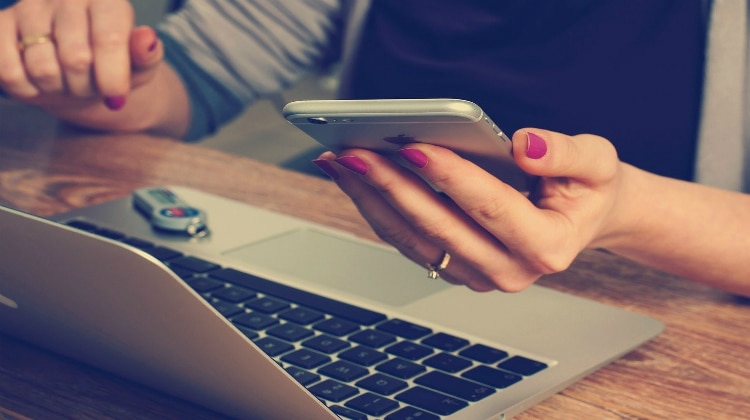How many of us spend our work lives in and out of our email inboxes? If your work habits are anything like the average professional in America, research suggests that anything up to 2.6 hours of your workday could be spent reading and answering emails.
But how many of us are actively thinking about the security of our email inboxes? A quick email is an easy way to pass a malicious link onto our systems, putting anyone who has an email account at risk of cyberattack. With the amount of personal information that passes through our email systems every day – names, addresses, contact details, even bank details and payslips – why wouldn’t we want to take more steps to protect its security?
Here is a checklist of simple security tips to keep your email account safe and secure.
1. Make your password stronger
Okay, so we all know the basics: don’t set your password as ‘password’, use a string of numbers like ‘123456’ or use any combination of your name and date of birth. Beyond that though, have you ever given the strength of your password much thought?
The strongest passwords include a combination of numbers, letters (both upper and lower-case) and symbols and are at least 16 characters long. Make your password as weird and wonderful as possible, or use a password generator to create a truly random one.
2. Don’t use the same password twice
It might be easier to use the same password for anything and everything you do online, but recycling your passwords across multiple online accounts puts them all at risk. Use a different password for every account you have online, especially across those that have your bank details stored. If you’re someone who struggles to remember passwords, consider using a password manager app to keep your login information secure and in one place.

3. Use two-factor authentication
Admittedly it can be a pain to have to go through an extra step of verifying that you are who you say you are whenever you want to use a different device. But having that extra step in place can help keep the wrong people out, even if they do get hold of your password.
4. Keep an eye out for phishing emails
If you read an email that sounds too good to be true, it probably is. Phishing emails are rife and one of the most popular ways cybercriminals do their damage. While hackers get more and more crafty, you can always stay one step ahead by knowing what signs to look out for.
Check the spelling and grammar
Phishing emails are notorious for being riddled with spelling mistakes and incorrect grammar, so always read the email carefully and critically.
Check the web address and email address
Check the email address it was sent from. If you notice a random email address that doesn’t match who the sender says they are in the email, or perhaps the address contains a lot of random characters or numbers, it’s likely to be a scam.
Don’t click any links in any email from someone you don’t know
Phishing emails have one clear goal: get you to click a link. At that point, you’ve opened the door for malware to work its way onto your device or computer and start to wreak havoc. If there are links in the email, hover over them before you click them to see the web address they are directing you too – if you don’t recognise the site, think twice before clicking it.
Check for any random email attachments
Many hackers use these as ways to force dangerous trojans or viruses onto your device by making you think they are genuine and well-intentioned. Spoiler alert: they rarely are.
Be wary if the email is designed to make you panic
Be wary every time you read an email that claims there’s been suspicious activity on your account, that there’s been a problem with your payment, that you must confirm some personal information or sends you over a fake invoice for purchases you don’t recognise.
5. Never check your emails from public WiFi
Don’t trust public WiFi with your emails. Hackers can use unsecured public networks as a way to sniff out your personal information, and emails tend to contain a lot of that. If you absolutely have to access your work emails on the go, use a top-quality VPN.
6. Turn on your spam filter on
One of the best ways to keep your email account secure is to have fewer malicious emails reaching you in the first place. This is where your spam filter comes in handy. Many cloud-based email clients like Gmail tend to come with this built-in, so check it’s turned on in your email settings. If you find yourself bombarded with similar spam emails, you can also set your spam filter to pick up and block certain keywords or phrases that keep cropping up.

Taking your email security one step further
Imagine you’ve taken all the steps you can think of to secure your own email address. Then someone in your team clicks a phishing link, allows malware onto their computer and all of your efforts were in vain. If you want to take email security one step further, consider making some technical changes to your email configuration to stay ahead of malicious attacks.
Email security is one everyone, so consider working your way through this checklist regularly to keep these tips fresh in your mind.
About EC-MSP, your IT support partner
EC-MSP are one of the most trusted IT support providers in London. If you would like more help advice and support with technology for your business, contact us today to see how we can help.




